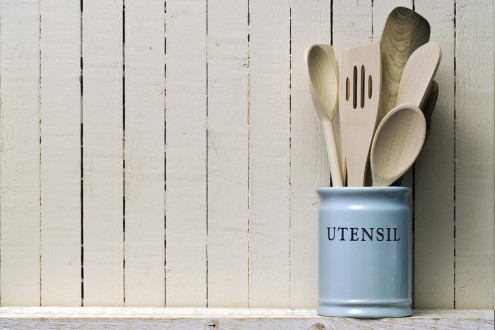Hands up if the minute you were diagnosed with GDM, your life called for 150% more organisation? Meal planning, food shopping, exercising, BGL testing, insulin, checkups with your care team, food diaries. So I imagine you’d welcome anything that could help you manage your GDM better and get organised at the same time right? Well the kitchen is the perfect place to get started.
It’s hard not to get a bit food obsessed when you have GDM because basically everything you eat ‘counts’. So I think it’s really important to find simple ways to work with the GDM diet and not against it.
Having certain ingredients and equipment on hand in your kitchen will make it easier to prepare GDM-friendly meals at any time and help you avoid reaching for something you know is off the list.
My ‘essentials’ are both ingredients common to my recipes or equipment that can make preparation that little bit faster. This isn’t an exhaustive list but if you have the majority of these ingredients on hand you’ll be able to prepare a GDM-friendly meal anytime. Find a recipe to suit your ingredients by typing an ingredient into the search box on the top right hand corner of the site.
Equipment essentials
- Baking dish (metal or glass)
- Chopping board
- Containers for freezing meals (There is a lot of research that suggests glass is best. Whether you choose plastic or glass, ensure it is food safe, microwave safe and has a tight seal to avoid freezer burning your food.)
- Grater (normal)
- Grater (fine) for zesting
- Measuring ladle (for soups or sauces or use a measuring cup)
- Measuring spoons
- Measuring cup
- Dutch oven or ovenproof casserole dish with lid (A 6 litre Dutch oven or heavy-based casserole dish will be invaluable for stews, large batches of soups and slow-cooked dishes. It should be suitable for both stovetop and oven cooking.)
- Electric kitchen scales
- Fry-pan (A non-stick frypan can reduce the amount of oil required for cooking.)
- Garlic crusher
- Hand blender
- Kitchen knives
- Steamer (one which fits over one of your saucepans)
- Saucepans with lids (It’s useful to have several sizes such as a 1.5 litre and a 2.5 litre.)
Ingredients
Spices & condiments
- Cinnamon (ground)
- Cumin (ground)
- Smoked paprika (ground)
- Italian herbs (a dried mix of oregano, basil, marjoram, thyme, and crushed rosemary)
- Miso paste (for soups, sauces and salad dressings)
- Stock cubes (salt-reduced chicken, vegetable and/or beef)
- Tamari or salt-reduced soy sauce
- Peanut butter (natural brands have no added salt, sugar or additives)
- Light cooking oil and/or olive oil (bottled or spray)
Groceries
- Canned brown lentils
- Canned beans (kidney, navy, garbanzo, canellini, borlotti or Fazolia beans)
- Canned tuna
- Canned tomatoes (crushed tomatoes save time)
- Citrus – oranges and lemons (great for zesting and juicing for dressings and sauces)
- Couscous
- Eggs
- Garlic
- Herbs (Grow or have a some of your favourite fresh herbs in the fridge. My favourites are tarragon and basil.)
- Low GI bread (Keep a loaf in the freezer. And for extra longevity, freeze a loaf in a paper bag then a tightly closed plastic bag.)
- Onions (red and brown)
- Pasta
- Rice (Australian ‘Doongara’ white rice or Basmati which are both lower GI.)
- Vita-Weat crackers (or a similar low GI grain cracker)
- Tomato paste
Fridge
- Broccoli
- Celery
- Green beans
- Hummus
- Low fat cheese (for slicing and grating)
- Low fat fetta
- Low fat milk
- Low fat yoghurt
- Salad leaves (great for quick salads or sandwiches or some added greens with your dinner)
- Tofu (firm is better for lightly grilling or frying)
Freezer
- Chicken breasts or thighs (mark with the date and freeze in 1 or 2 serve portions)
- Beef (Either some good quality steaks or cuts for stewing or stir frying. Mark with the date and freeze in 1 or 2 serve portions.)
- Frozen peas
